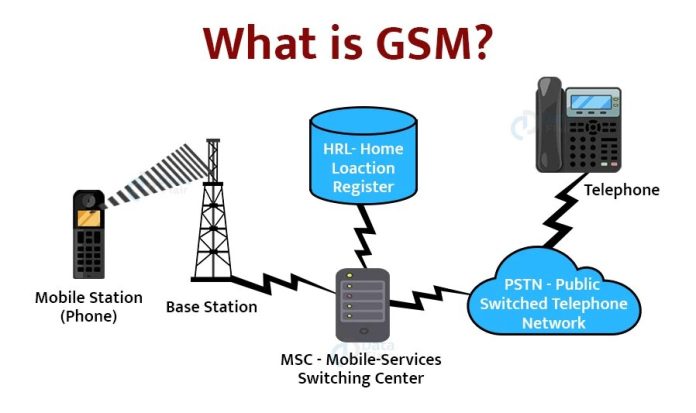In the vast landscape of telecommunications, GSM stands tall as a revolutionary technology that has played a pivotal role in shaping the way we communicate. Let’s embark on a journey through the realms of GSM, exploring its meaning, history, types, architecture, applications, advantages, disadvantages, and what the future holds for this transformative technology.
What is GSM?
GSM, which stands for Global System for Mobile Communications, is a standard developed to ensure a common platform for mobile devices to communicate seamlessly across the globe. It is a digital cellular technology that facilitates voice and data communication through the use of a standardized mobile phone system.
GSM Meaning:
GSM is an acronym for Global System for Mobile Communications, reflecting its ambition to provide a universal standard for mobile communication.
GSM History:
The roots of GSM trace back to the early 1980s when European telecommunications authorities sought to establish a standardized mobile communication system. The first GSM network was launched in Finland in 1991, marking the beginning of a new era in wireless communication.
GSM Types:
GSM has evolved over the years, leading to the development of various types. The two primary categories are 2G and 3G, with 4G and 5G now dominating the landscape. Each generation represents significant advancements in terms of data speed, network capacity, and functionality.
How GSM Works:
GSM operates on a combination of time division multiple access (TDMA) and frequency division multiple access (FDMA) principles. TDMA divides a radio frequency into time slots, allowing multiple users to share the same frequency without interference. FDMA, on the other hand, divides the frequency into channels. This combination optimizes the utilization of the available spectrum, enabling efficient communication.
GSM Module:
A GSM module is a crucial component in the GSM architecture, serving as the interface between a mobile device and the GSM network. It enables devices to send and receive information, making it a fundamental building block in the world of mobile communication.
GSM Architecture:
GSM architecture comprises several key elements, including mobile stations, base transceiver stations, mobile switching centres, and the home location register. This intricate network ensures the smooth flow of communication between mobile devices.
GSM Uses:
GSM finds extensive applications in mobile communication, supporting voice calls, text messaging, and data transfer. It is the backbone of various services, including mobile banking, internet connectivity, and location-based services.
GSM Advantages:
The widespread adoption of GSM can be attributed to its numerous advantages. These include global compatibility, efficient use of spectrum, secure communication, and support for various services beyond voice calls.
GSM Disadvantages:
While GSM has revolutionized communication, it is not without its limitations. These include lower data transfer speeds compared to newer technologies like 4G and 5G, limited capacity for simultaneous users, and vulnerability to certain security threats.
Future of GSM:
As we gaze into the future, GSM continues to play a crucial role in global communication. While newer technologies emerge, GSM remains relevant in areas where advanced features are not a priority. Additionally, efforts are underway to repurpose GSM infrastructure for the Internet of Things (IoT) and other innovative applications.
In conclusion, GSM stands as a testament to the power of standardized communication. From its humble beginnings in the 1990s to its widespread adoption globally, GSM has left an indelible mark on the telecommunications landscape. As technology continues to evolve, GSM adapts, ensuring its relevance in the dynamic world of mobile communication.








